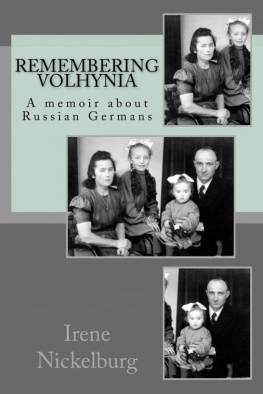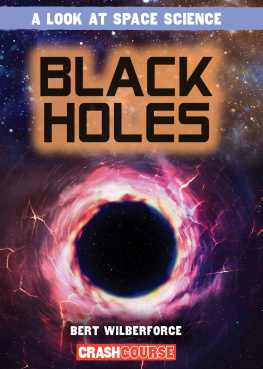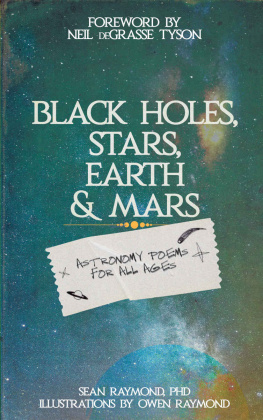Lydia Netzer
How to Tell Toledo from the Night Sky
FOR JOSHILYN AND SUSANNAH,
MY SISTERS
A Cradle Song
The angels are stooping
Above your bed;
They weary of trooping
With the whimpering dead.
Gods laughing in Heaven
To see you so good;
The Sailing Seven
Are gay with His mood.
I sigh that kiss you,
For I must own
That I shall miss you
When you have grown.
William Butler Yeats
A test field in the form of an initially uniform train of waves propagating into a Kerr-Newman black hole has its crests crowded together and magnified by gravitational and Doppler blueshifts that grow without bound at the Cauchy horizon. Such perturbative results suggest (though they do not prove) that inside a black hole formed in a generic collapse, an observer falling toward the inner horizon should be engulfed in a wall of (classically) infinite density immediately after seeing the entire future history of the outer universe pass before his eyes in a flash.
E. Poisson and W. Israel, Inner-Horizon
Instability and Mass Inflation in Black Holes
(Physical Review Letters, volume 63, pages 166366, 1989)
On the night when George and Irene were born, the sun set in a boil of red-orange ribbons across the Ohio sky. The people of Toledo looked out their western-facing windows at the night, buttoned the collars of their pajamas against the cold, and closed the blinds as darkness fell. They lay down flat in their beds and began to sleep. Some turned over on their sides, first some punched their pillows, and some sighed. But sleep came for them all, one by one, and they slid under it willingly. No one fought. No one refused. Sleeping, they lost track of what was going on. They were no longer in Toledo, but in Paris or in the past, on the moon or in a book theyd read. Behind closed eyes and sleeping faces, they were gone.
Into what deep well did they all fall, single file? On what small ledge did each waver, and then drop down from waking into dreaming, down from life to death? A man who falls asleep is like a diver who slips from the air into the water. Yet through it all, the sleeping mans body stays put, under a thin sheet, straight and flat. You could put his whole body in a box. You could put the box into the ground.
Sleep is a shallow death we practice every night. City after city, as the earth turns and rolls around the sun, we lie down and close our eyes. We try out this thing, death, for an eight-hour stretch. New York, Toledo, Dallas, Los Angeles: we all go down. Our sleeping minds blur the boundaries between our bodies and our idea of the world into what would otherwise be madness. In sleep we have no senses but imagined senses, no grasp on fate except a lunatics idea of control. Being crazy is like being asleep, and being asleep is like dying. Its just like dying, because the body needs to do it. It has no choice.
By the time the people of Toledo actually die, they will have practiced it thousands of times. The sense of going under will be familiar. The sense of slipping loose from sanity will be no stranger. They will be very good at dying, by the time they get to do it. So good, it will be absolutely irreversible. To everyone, this seems like a good idea. On the night that George and Irene were born, the city was silenced by the effort of sleep, and all the astronomers and astrologers, and all the preachers and historians, and all the girls and boys had gone into the dark.
There was one hospital in the city of Toledo, a box of light and nervous energy in the sleeping world. Inside, the people were wide awake. In the maternity ward, two mothers pushed and strained to give birth. There was a lot of grunting, a few tense moments, several people counted to ten, and then the babies emerged, full of love and covered in blood. The mothers that birthed them smiled at each other. These births had been carefully arranged.
George and Irene were born to be together.
The night sky was dark and windy from the stars exploding. But when the babies came out, they were perfect: a boy and a girl. The wide-awake nurses even said how beautiful and big and healthy they were. George and Irene didnt look alike. Nor do gods look like humans, or heaven like the earth. They were the same age, exactly. Not an older and a younger twin, but the same twin repeated. Its very difficult to produce twin souls. Its not just a matter of double strollers and megadiaper packs. There are subtleties and manipulations, and there are moments of distress, when it all seems like it wont work out correctly. When you think about it, how many times have twin souls been successfully created? Look at Antony and Cleopatra. Now there was a botched project.
Look at Castor and Pollux; they ate each other in the end. At least, people think they did. But maybe they sat down together on an unmade bed, and began to kiss, and covered each others mouths with their mouths, and began to breathe, in and out, holding each other around the neck, and taking each others carbon dioxide, until their eyes bugged out and they were gone.
As for the twin souls of George and Irene, this is their story. How they met on earth, and how they slept and practiced for their deaths, night after night, and met in certain dreams, and came to love and lose each other, and live on.
At the time her mother fell down the stairs to her death in Toledo, Irene was far away in Pittsburgh, working in a lab. As her mother bounced down a flight of stairs in a bright city on the sparkling shore of Lake Erie, Irene sat in a dark room, in the basement of an ugly building, in a drab university, in an abandoned steel town. Irenes mother was named Bernice. They had not spoken to each other in years.
Irene pulled her lab coat around her and stared intently into a small glass window on a large metal apparatus. She wasnt thinking about her mother at all. In fact, all she was thinking about was her work. As her mother landed at the bottom of the stairs, arms and legs cracking, Irene concentrated only on recording the data from her machine. All of her recent days had been spent alone, just like this, compressed into the space in her own head. Yes, she had a boyfriend, a mother, a boss. But there was her and there was everything else. There was her and there was the world. She had a reason for this. It wasnt only vanity.
As her mothers limbs banged and broke and settled into place around her on the floor, Irene peered again into the window in the middle of her machine. It was as big as the whole room, and had the shape of an 8, made of bright metal. She leaned over it and looked down into it, where the two sides of the 8 connected. The machine buzzed under her hand. Inside, the little particles were whirring around. She was an astrophysicist, attempting to observe a black hole by exciting the particles in the machine. It was all she had been doing and trying and thinking about for months: proving that there are black holes all around us, and we have been walking through them all our lives. It was her work, and her entire focus was there.
In Toledo, Bernices spinal fluid leaked into the tissue around her cervical vertebrae, and there was thick blood coming out her ear. In Pittsburgh, Irene concentrated on turning a little numbered dial, click by click. Although her eyes were heavy and she was tired, she would not quit.
She adjusted a different knob on the control panel and flicked a switch. She adjusted and peered, over and over. There are a lot of fractions between zero and one. There are a lot of sort-ofs between off and on. She had to test everything. For an almost innumerable number of failures, she had continued. She had to assume that this day would be no different, but she would carry on anyway.











